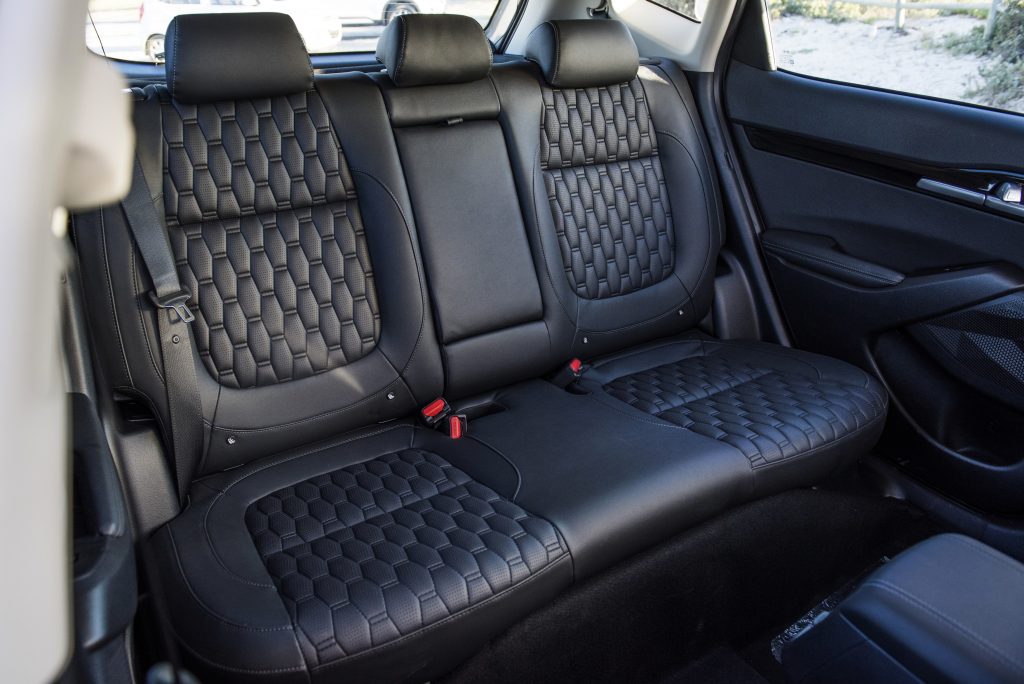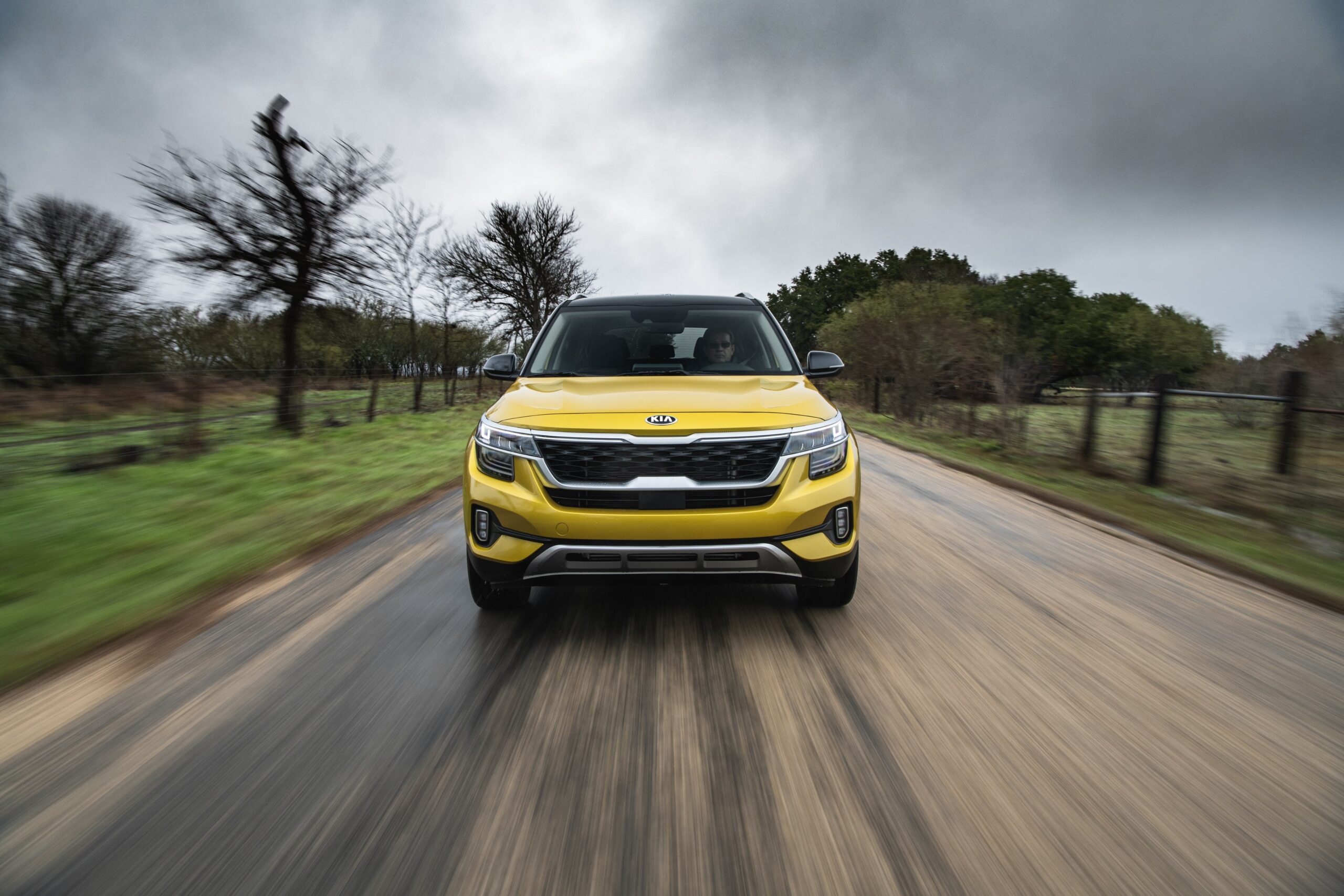At the media drive for the 2020 Seltos, Kia listed no less than 5 vehicles as potential competitors for its new subcompact crossover. That list includes well-regarded models such as the Volkswagen T-Cross, Honda HR-V and Hyundai Venue, the latter from Kia’s parent brand. So, what did Kia do to distinguish the Seltos from this large group of rivals?
Buyers may like to think they’re getting rugged SUVs, but vehicles in this class are essentially hatchbacks on stilts. Still, Kia has made the Seltos as SUV-like as possible, giving it a more sophisticated all-wheel drive system than many rivals. Kia also emphasised value, giving the Seltos a long list of driver aids and tech features.
Kia offers buyers a unique choice. The base price of R353,995 buys you the manual EX model. Kia provided a range-topping 1.4 T-GDi GT-Line, which starts at R 444,995 to test.



There is a lot that one could compare between the Seltos and Hyundai Venue, but the two crossovers could not be more different when it comes to exterior design. Where the Hyundai is all sci-fi curves, the Kia has a more traditional, squared-off look. It may be engineered more like a subcompact hatchback, but the Seltos looks like an SUV.
It also offers more SUV-like utility than many rivals. The Seltos offers substantially more rear-seat space than its Kona platform mate, as well as more cargo space than any direct competitor. However, the Honda HR-V’s “Magic” rear-seat folding mechanism makes it easier to take advantage of what cargo space is available. The Honda also offers more rear-seat legroom than the Kia, while the Jeep Renegade has more headroom front and rear. Regardless, the Seltos offers enough added utility to justify buying one over a comparably-sized car – which isn’t always the case in this segment.



The Seltos’ interior is also a nice place to be. It’s not exactly fancy, but materials feel appropriate for this price range. The upright roof leaves lots of room for glass, providing good outward visibility and giving the interior an airy feeling. The front seats felt decently comfortable over a day of driving, and the rear seats recline.
The standard infotainment system includes an 8-inch touchscreen with Apple CarPlay and Android Auto as well as Bluetooth connectivity with voice recognition, and has charging USB ports for front and rear passengers. Unfortunately there is no navigation.



That’s not a bad thing. Typical for Kia, the infotainment interface is lacking in bells and whistles, but is still easy to use. The one major fault is that Kia forces the driver to dive deep into screen menus to switch driver aids on and off. It’s not exactly easy to do while driving, and we wish Kia included some hard buttons instead.
The infotainment interface is somewhat lacking in bells and whistles, but is still easy to use.
The Seltos does feature a few safety features as standard, including ABS brakes, and Electronic Brake Force Distribution (EBD), as well as rear park distance control sensors and a reverse camera with dynamic guidelines, integrated into the vehicle’s touchscreen infotainment system. Central locking and an immobiliser are also standard across the range.



The Seltos EX model comes standard with a 1.6-litre naturally aspirated four-cylinder engine, making 90 kW of power and 151 Nm of torque. This engine is mated to either manual or a continuously variable transmission (CVT), which Kia calls an Intelligent Variable Transmission (IVT). We enjoyed the 1.4-litre turbocharged four-cylinder. Turbocharging allows this smaller engine to make 103 kW of power and 242 Nm of torque, and Kia coupled it to a seven-speed dual-clutch transmission for a sportier feel.
The turbocharged powertrain is a winner. The engine offers plenty of grunt, and the dual-clutch transmission’s quick shifts help make the post of it.
However, the Kia lacks the Hyundai’s sporty handling. There’s nothing wrong with the way the Seltos handles, but it isn’t as sharp and precise as the Kona. The Seltos does have a more comfortable ride than the Kona, though, and the target buyer is more likely to care about that than corner-carving ability. If you want your small crossover to feel like a sports car, get the Hyundai or, better yet, the Mazda CX-3.
The turbocharged powertrain found on the GT-Line is a winner. Hill start assist and hill descent control are standard on all Seltos models. The all-wheel drive system even has a cool name: Dynamax.



These features should add confidence in bad weather or on unpaved roads, but they don’t turn the Seltos into an off-roader. Kia was quick to point out that the Seltos has a better approach angle than a Jeep Renegade or Subaru Crosstrek, meaning you’re less likely to smash the front end into something while driving over uneven terrain.
The Seltos is a new model, so it’s difficult to predict future reliability. Kia has a fairly good overall reputation for reliability, however, and offers generous warranty coverage. Kia’s industry-leading Unlimited Kilometre, 5-year warranty (inclusive of roadside assistance), and also include a 5-year/90,000km Service Plan.



Many crossovers in this price range claim to offer SUV ruggedness, but are really just glorified hatchbacks. The 2021 Kia Seltos is the real deal.
The Seltos delivers on the things that distinguish crossovers from ordinary cars. It offers impressive cargo space for a vehicle of this size, and an all-wheel drive system that will make a real difference in foul weather. In such a crowded field, competitors inevitably do certain things better than the Seltos. The Kia lacks the off-road capability of the Jeep Renegade, or the on-road poise of the Mazda CX-3. While Seltos is available with many driver aids, the Honda HR-V offers more of them as standard equipment. But while it may not be the best in some areas, the Seltos does everything well.
Should you get one? Yes. The Seltos is an impressive value.
Head over to TWFLD.com for more great content like this.










